Treatment of Ovarian Polyembryoma
Best hospitals and doctors for ovarian polyembryoma treatment abroad
Leading hospitals
Cost for treatment
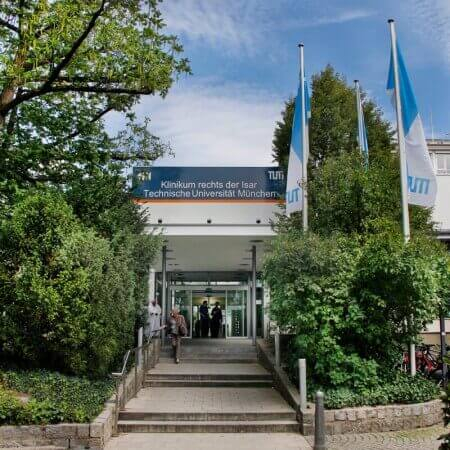























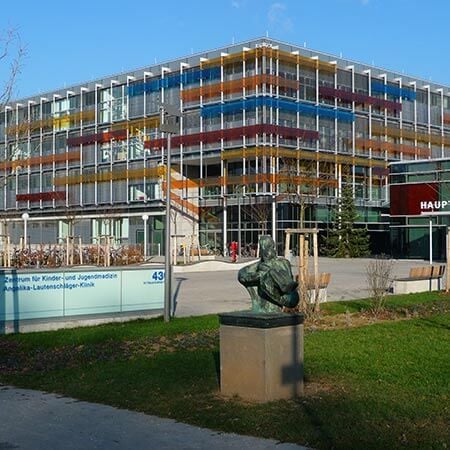





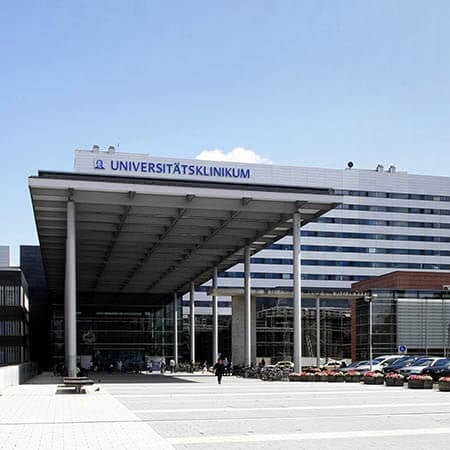





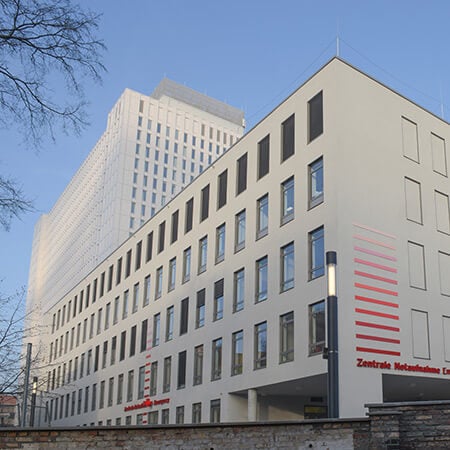











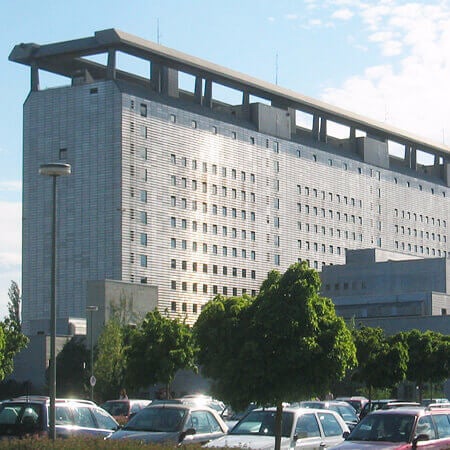











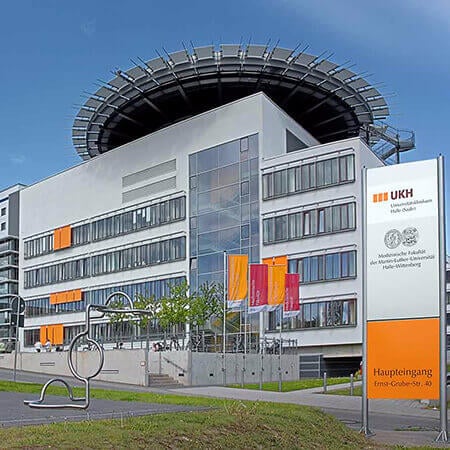





























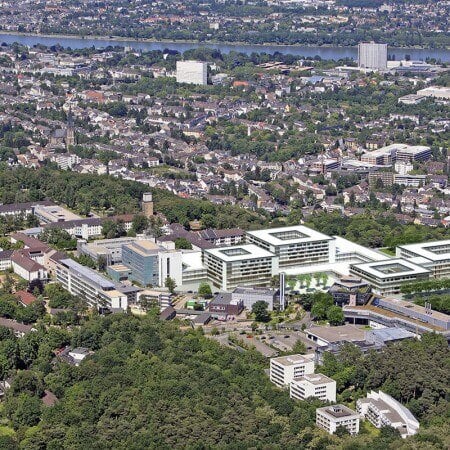





An ovarian polyembryoma is a rare germ cell tumor. The neoplasm is diagnosed predominantly in young women. Ovarian polyembryomas practically do not occur in their pure form. The elements of a polyembryoma are usually part of mixed tumors. The larger its proportion, the worse the prognosis, since this type of tumor is more aggressive than most types of cancer. It is a complex task to treat this cancer, and it also recurs more often. This cancer is resistant to irradiation and to many chemotherapy agents. Despite all the difficulties, doctors in German Oncology Centers successfully cope with ovarian polyembryomas.
Content
- Treatment principles
- Surgical treatment
- Chemotherapy
- Other treatment methods
- Why is it worth undergoing polyembryoma treatment in Germany?
Treatment principles
The main treatment options for patients with a newly diagnosed ovarian polyembryoma are:
- surgery and follow-up monitoring (early stage only);
- surgery followed by chemotherapy (the most common treatment option);
- chemotherapy followed by surgery (if a tumor has reached a large size at the time of its detection and this needs to be reduced in order to try to remove it completely);
- only chemotherapy (if a surgical intervention is contraindicated or the patient refuses it).
Radiation therapy is usually not used. A polyembryoma is highly resistant to radiation. Radiation therapy can sometimes be carried out in the advanced stages of the disease to relieve symptoms and reduce the risk of complications.
Surgical treatment
Treatment usually begins with tumor removal. Operations can be performed at any stage of an oncological disease, from the early stages to the advanced ones. However, the extent of surgical interventions and the goals of treatment differ significantly. The disease can be cured completely in the early stages, but as the tumor process progresses, the cure becomes less and less likely, since cancer spreads through the abdominal cavity. It is almost impossible to destroy all cancer cells. Nonetheless, even in such a case, good results can be obtained: the disease can be controlled for many years by reducing the tumor mass with cytoreductive surgery and destroying the remaining cancer cells with chemotherapy agents.
There are several types of surgical interventions for patients with an ovarian polyembryoma:
Bilateral adnexectomy is the removal of the ovaries with fallopian tubes. This is the main operation at the initial stage. It is performed on all women who do not plan to conceive a baby. As a rule, surgical interventions are performed via an open rather than a laparoscopic approach. This is necessary for performing surgical staging procedures. When both ovaries are removed, a woman cannot become pregnant unless she has frozen her eggs beforehand. However, the uterus is preserved, so pregnancy is possible with the help of IVF. Embryos are transferred into the uterus from a woman's own frozen or donated oocytes.
Unilateral adnexectomy is another surgical opinion. The removal of two ovaries is more effective, since in this case the risk that the tumor recurs is reduced. However, such an operation entails two problems: infertility and premature menopause. Since the majority of patients are children and young women, the removal of both ovaries should be avoided whenever possible. Doctors can only remove the uterine appendages on one side. As the risk of oncology recurrence increases in this case, women need more accurate monitoring: regular tumor marker blood tests, gynecological examinations, and instrumental tests of the pelvic organs. Should any signs of recurrence be detected, a second operation can be performed to cure the cancer.
Surgical staging is a number of procedures that are performed during the operation. If surgical intervention is performed at an early stage, the goal of treatment is the complete elimination of the ovarian polyembryoma. Therefore, doctors have to make sure that they are really dealing with the early stage and that the tumor has not spread to other organs. As part of surgical staging, suspicious lymph nodes are also removed and examined. Doctors accurately examine the entire abdominal cavity, take a biopsy, smears and swabs from suspicious areas of the peritoneum.
Cytoreductive surgery is performed at an advanced stage of cancer. The aim of this intervention is to reduce the tumor mass as much as possible. Doctors remove the uterus, appendages, omentum, as well as all tumor foci detected in the abdominal cavity. Sometimes there are quite a few of them, so doctors have to partially remove the intestine, bladder, and sometimes other organs as well. After the removal of the tumors, a reconstructive stage of the operation is performed to restore the damaged organs.
Depending on the extent, cytoreduction can be:
- complete cytoreduction that involves the removal of all visible tumors;
- optimal cytoreduction that involves the removal of all tumors larger than 1 cm;
- suboptimal cytoreduction, after which at least one tumor larger than 1 cm remains.
Suboptimal cytoreduction is actually an unsuccessful operation, since if tumor foci larger than 1 cm remain, the survival rates of patients are approximately the same as in the case of chemotherapy alone, without any surgical intervention. Optimal cytoreduction significantly increases life expectancy as it is more effective than drug therapy. The best results can be achieved with complete cytoreduction.
Chemotherapy
The second most important treatment method for an ovarian polyembryoma is chemotherapy. This is prescribed to most patients with a polyembryoma, except at a very early stage of the disease. Doctors use different chemotherapy regimens, such as PEP, PEI, TIP, and VeIP. The choice of the regimen is determined by the goal of therapy, the stage of the disease, the response to previous treatment, and the health status of a woman.
Chemotherapy can be used in the following cases:
- chemotherapy after surgery is the most common option, as the use of drugs allows doctors to destroy the remaining cancer cells in the body and lower the likelihood of recurrence;
- chemotherapy before surgery can be used for advanced polyembryomas, as doctors can shrink the tumors to improve the chances of achieving a complete cytoreduction with follow-up surgery;
- chemotherapy can be used as the main treatment method for those for whom surgery is contraindicated (but if there are no medical contraindications, it is advisable to perform surgical treatment even at the advanced stage, since it increases the survival rate of patients);
- chemotherapy can be used to treat recurrence if it is impossible to perform a second operation to remove the tumor.
Most women respond to initial treatment. However, in the future, the tumor may return, in which case the therapy must be repeated. The further treatment regimen depends on the timing of the onset of recurrence. If the tumor has recurred in a year or more, doctors may use the same chemotherapy regimen that has been successfully tried before. However, in the early recurrence that occurs less than 6 months later, the chances of success with the same drugs are low. Therefore, doctors use second-line therapy. They use drugs from other pharmacological groups. If there is no response to treatment, third-line therapy and so on may be used until the result is achieved.
Other treatment methods
If other treatment methods do not work, doctors may try non-standard methods to control oncological diseases:
High-dose chemotherapy with a stem cell transplant. This technique is currently being studied in clinical trials. Doctors use high doses of drugs to destroy all cancer cells in the body. This is followed by a donor stem cell transplant, which restores impaired hematopoiesis and activates a "graft-versus-tumor" effect.
Targeted therapy and immunotherapy. Drugs from different pharmacological groups are still being tested in clinical trials and are not part of a standard treatment. Patients who are not responding to conventional chemotherapy may be eligible to participate in these trials.
Radiation therapy. This treatment option has low efficiency for a polyembryoma, but doctors in developed countries use innovative options of radiation therapy, which are more accurate and sparing for surrounding tissues. They help to deliver more radiation to the tumor to overcome radioresistance. Doctors often use radiation therapy not to destroy the primary tumor, but to control metastases, for example, in the brain.
Chemoembolization. This therapeutic procedure can be used for metastatic liver lesions. This is a minimally invasive procedure that is performed from the inside of the blood vessels. Doctors use tiny microspheres containing chemotherapy agents to block the arteries that supply the tumor. As a result, the metastatic tumor dies due to the lack of blood supply, and the remaining cancer cells in the liver are destroyed by drugs that are released from the microspheres over several weeks.
Why is it worth undergoing polyembryoma treatment in Germany?
German hospitals offer modern equipment, innovative methods, and drugs. The high level of qualification of German doctors is beyond doubt. When you get medical services in this country, you can count on the best results with minimal health risks.
There are several reasons for you to undergo your ovarian polyembryoma treatment in a German hospital:
- the possibility of a complete cure of cancer at an early stage;
- preservation of the reproductive function for young women;
- highly accurate intraoperative diagnostics to determine the exact stage of an ovarian polyembryoma and choose the best treatment tactics;
- successful cytoreductive operations even at the advanced stages of the ovarian polyembryoma;
- when performing cytoreductive operations, doctors mostly manage to achieve a complete cytoreduction, which significantly improves the prognosis for patients;
- cancer can be cured or controlled with drugs for many years if the tumor is detected at the advanced stage;
- doctors use the most effective combinations of chemotherapy drugs that have proven themselves in clinical trials.
You are welcome to use the Booking Health service to go to Germany to undergo your ovarian polyembryoma treatment in one of the best clinics in the world. On our website, you can find the cost of treatment in Germany, compare prices in different hospitals, and book your treatment at the best price. The Booking Health staff will help you to find the best German hospital and take care of all travel arrangements. The cost of treatment in Germany will be lower for you due to the lack of additional taxes for foreign patients. If you make your treatment appointment through our service, the initial price will be final: this will not increase even if additional medical procedures are required, as their cost will be covered by insurance.
Authors:
The article was edited by medical experts, board-certified doctors Dr. Nadezhda Ivanisova and Dr. Sergey Pashchenko. For the treatment of the conditions referred to in the article, you must consult a doctor; the information in the article is not intended for self-medication!
Sources:

